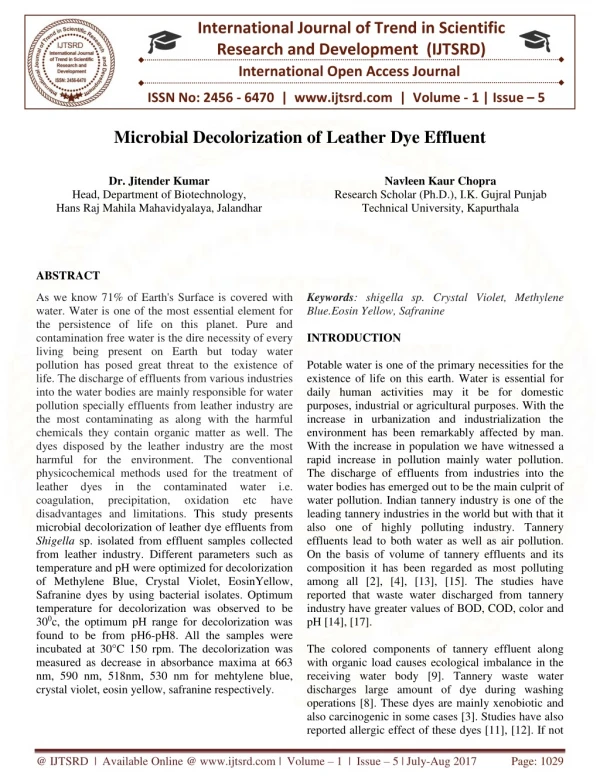Microbial Decolorization of Leather Dye Effluent
As we know 71 of Earths Surface is covered with water. Water is one of the most essential element for the persistence of life on this planet. Pure and contamination free water is the dire necessity of every living being present on Earth but today water pollution has posed great threat to the existence of life. The discharge of effluents from various industries into the water bodies are mainly responsible for water pollution specially effluents from leather industry are the most contaminating as along with the harmful chemicals they contain organic matter as well. The dyes disposed by the leather industry are the most harmful for the environment. The conventional physicochemical methods used for the treatment of leather dyes in the contaminated water i.e. coagulation, precipitation, oxidation etc have disadvantages and limitations. This study presents microbial decolorization of leather dye effluents from Shigella sp. isolated from effluent samples collected from leather industry. Different parameters such as temperature and pH were optimized for decolorization of Methylene Blue, Crystal Violet, EosinYellow, Safranine dyes by using bacterial isolates. Optimum temperature for decolorization was observed to be 300c, the optimum pH range for decolorization was found to be from pH6 pH8. All the samples were incubated at 30u00c2u00b0C 150 rpm. The decolorization was measured as decrease in absorbance maxima at 663 nm, 590 nm, 518nm, 530 nm for mehtylene blue, crystal violet, eosin yellow, safranine respectively. Dr. Jitender Kumar | Navleen Kaur Chopra "Microbial Decolorization of Leather Dye Effluent" Published in International Journal of Trend in Scientific Research and Development (ijtsrd), ISSN: 2456-6470, Volume-1 | Issue-5 , August 2017, URL: https://www.ijtsrd.com/papers/ijtsrd2405.pdf Paper URL: http://www.ijtsrd.com/biological-science/biotechnology/2405/microbial-decolorization-of-leather-dye-effluent/dr-jitender-kumar
★
★
★
★
★
97 views • 5 slides

